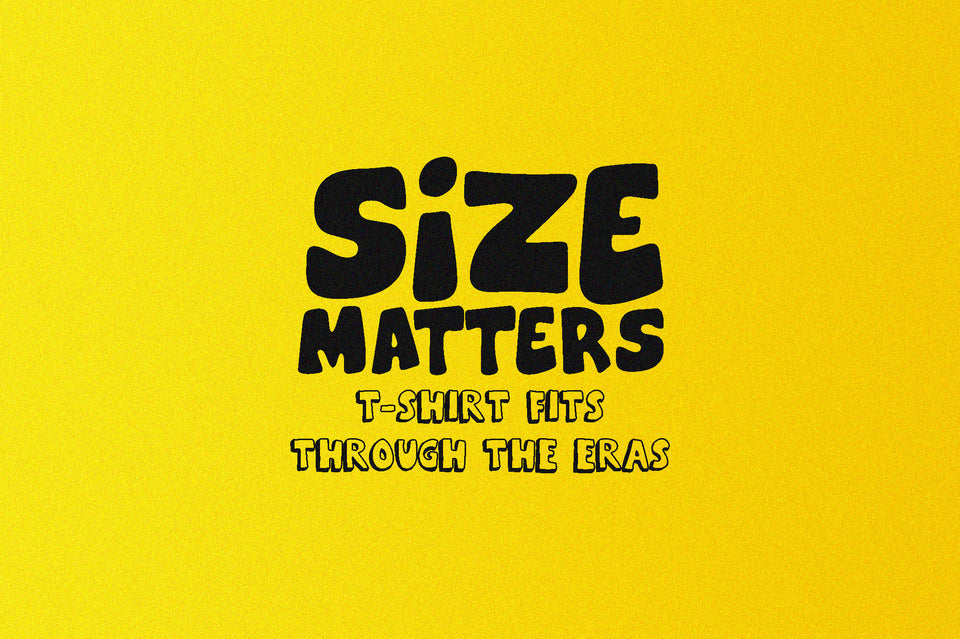
All Things Vintage: T-Shirt Shape Guide
If you've ever looked for vintage shirts, you know it: A (small) "medium" size from the 80s is not comparable to a (medium) "medium" of today. And the shirts in the 90s, 2000s and 2010s turned out differently again! Reason enough for us to take a look at how the silhouette of shirts has changed over the decades.
1980s: It can always get slimmer!
Even though the 80s were rich in opulent trends - shoulder pads, blow-dry hairstyles and fringed jackets say hello - they were also the decade of the slim fit: T-shirts were figure-hugging and liked to be tucked into pants.
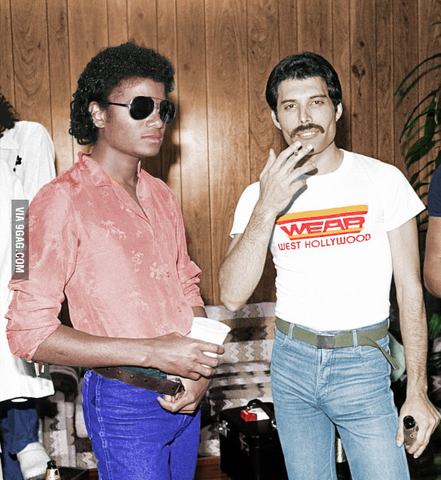
The sweaters were not worn quite as tight, but were also cut shorter. To reach the waistband of the (also tight and additionally high-fitting) jeans, so not much fabric was needed. Clearly, the sizes are accordingly much smaller compared to today! An XXL from the 80s is therefore by 2020 standards rather a medium.
We therefore note with each of our articles whether a piece is "true to size" or not (or whether it is a "women's size", which is always shorter and narrower).
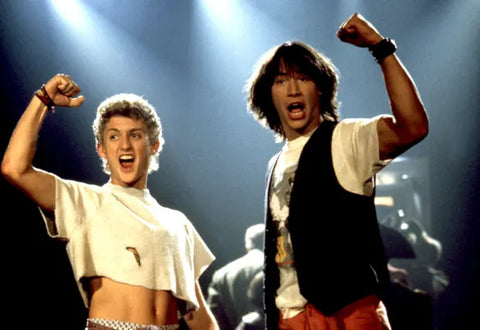
Speaking of "shorter and narrower": The crop tops, which are currently celebrating a comeback, also come from the 80s. And (contrary to homophobic "critics") they actually have a hypermasculine origin - in American football. Because jerseys were regularly torn during games there, the players' abs were often visible. This, together with the bodybuilding hype of the time, led to the trend of producing shirts directly in this way. True to the motto: "Show 'em what you got" - but crop tops were rocked even without a six-pack.
1990s: Baggy, baggy, baggy, can't you see?
In the 90s, not only technology and movies became faster, bigger and louder (Playstation 1, CGI or Love Parade, anyone?). But also fashion: Of course, there were still tight-fitting clothes, but they were now often combined with baggy pants or directly exchanged for shirts with boxy fit.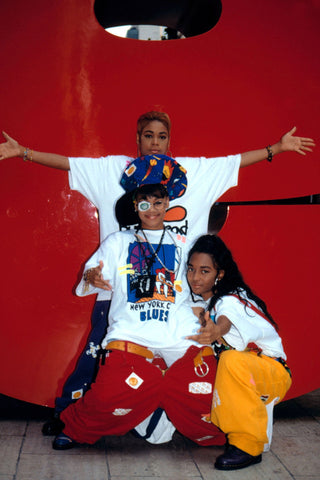
TLC: Crazy, sexy, cool (and still very baggy)
The trend towards "bigger and wider" was on the one hand logical, because fashion has always sought the greatest possible contrast to previous designs. However, two youth cultures that completely exploded in the mainstream in the 90s were definitely also significantly involved in the baggy trend: skateboarding and hip hop. They had a soft spot for loose-fitting clothing for quite logical reasons, namely because of more freedom of movement and storage space. For more on this topic, see our article on the evolution of Carhartt Work Pants.
But it wasn't just rappers and skaters who were now wearing oversized T-shirts and sweaters (and pants and jackets): the "boxy fit" - that is, just as wide as it is long - was everywhere from raves and catwalks to TV.

2000s: The decade of XS and XXXXXL
The new millennium brought, besides ringtones and German gangster rap, two extremes in the matter of "T-shirts": Very tight and very wide shirts.
Emocore was probably not entirely innocent of the popularity of tight T-shirts - many bands of the emotive music genre have also carried their otherness outward with their outfits, whereby in addition to makeup and hairspray, a return to the tight style of the 80s was also celebrated - including tight shirts, which is not surprising with possible (style) role models such as The Cure.

At the same time, hip hop was once again significantly involved in the opposite oversized trend: After the music genre had been dominated by artists from New York and Los Angeles for decades, the "Dirty South" gained in importance from the early 2000s.
The sound of trap (in T.I.'s sense) and music videos drew the spotlight to oversized T-shirts that hung in the closet of seemingly every Southern (T)rapper. One explanation for this: illegal substances could easily be hidden unseen under the wide (mostly white) shirts. They were also cheap to get (and from now on were also produced by new brands eeeextra long.
Dem Franchize Boyz with THE anthem for oversized shirts
2010s: A little bit of everything
After the extremes of previous decades, the fit of shirts and sweaters in the 2010s settled mostly in the middle: The regular fit, which of course never went away, made a comeback even in subcultures. And even if skinny jeans were still selling like hot cakes, above the waistline many things were 'normal' again - somewhere between the slim fit of the 80s and the drop shoulders of the 90s.
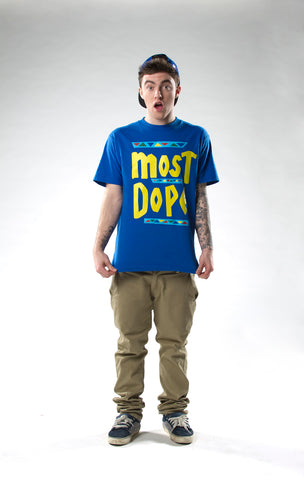
Of course, we still have to mention narrow but overlong shirts, which in the early 2010s everyone from Kanye West to the shisha bar owner from Buxtehude rocked. Also important and above all innovative: shirts and tops made of Dri-Fit. The polyester material, which helps cool the body thanks to high-performance microfibers, has certainly also helped make tight-fitting clothing more presentable - but for once, for functional reasons.
PS: The next time you look through our vintage shirts and vintage sweaters, you'll now know why we label every single piece with sizing and the info "true to size" or additional info - because "XL" or "Small" used to mean something different than it does today.